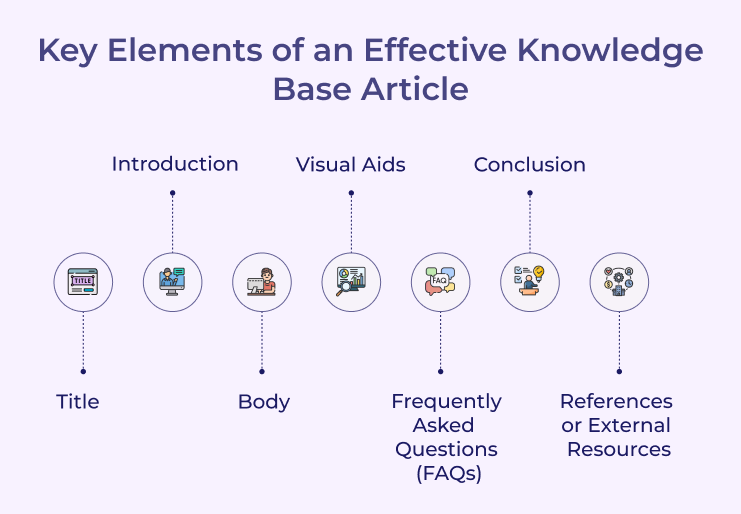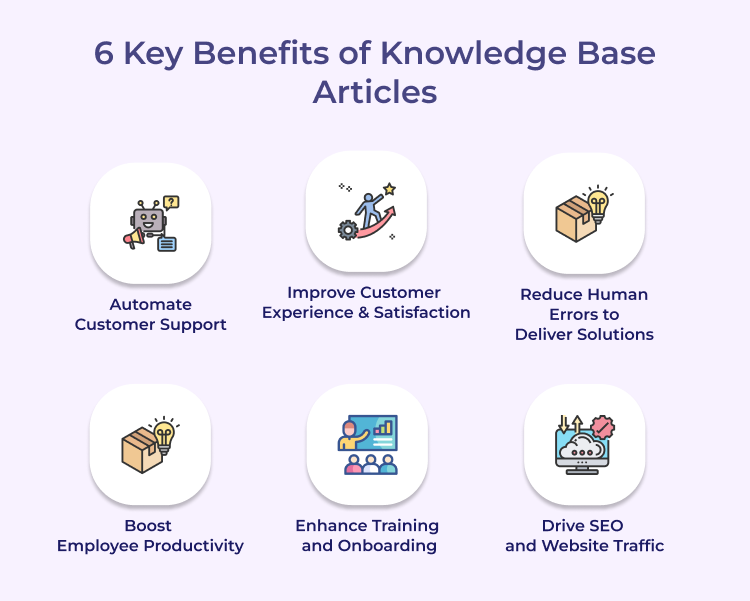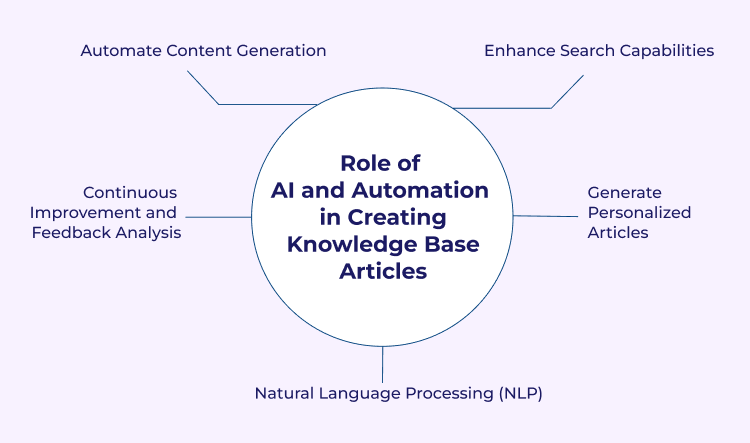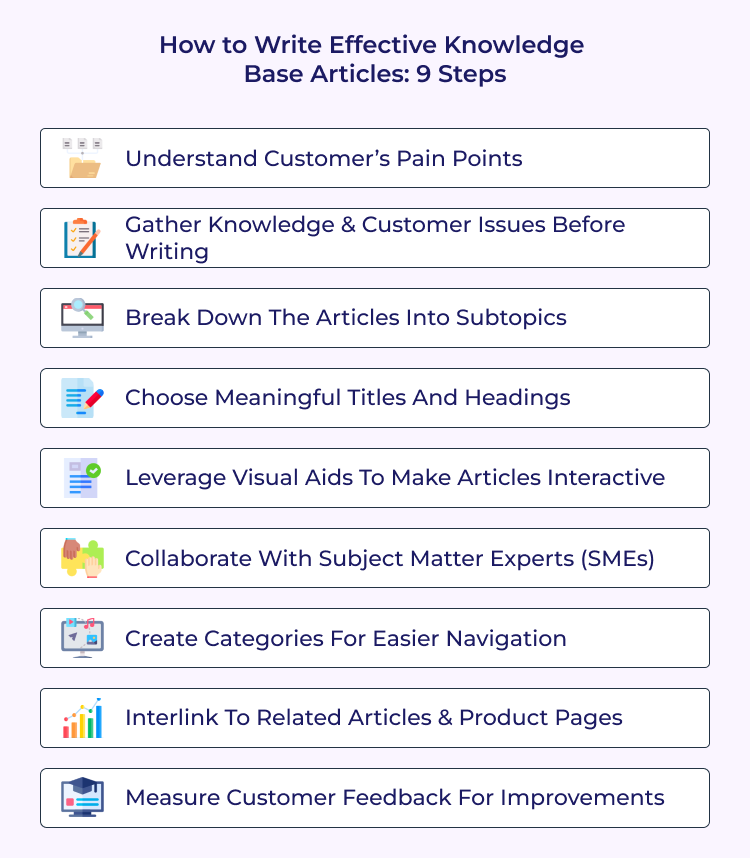1. Understand Customer’s Pain Points
Understand your customers’ to have a deep analysis of pain points to get started with the knowledge base articles. You can create informative articles that directly address their needs by empathizing with their struggles. It will enhance the customer experience and reduce the number of support requests.
Primarily, it can be implemented by conducting research and gathering data to identify common issues as well as problems faced by your customers. Address the pain points in your knowledge base articles by providing clear solutions.
Actionable tips:
- Perform regular customer feedback surveys to gain insights into their pain points and adjust your knowledge base articles accordingly.
- Use specific and relatable language in your articles to show empathy as well as understanding for your customers’ experiences.
- Provide detailed step-by-step instructions or troubleshooting guides in your articles to address your customers’ pain points directly and help them find solutions efficiently.
2. Gather Knowledge and Customer Issues Before Writing
Conduct thorough research on the concerns faced by your customers in general. Gather knowledge and solutions around customer issues to ensure that your articles are targeted, informative, and address the most common problems faced by your users.
Businesses can start it by conducting thorough research on the topic, including customer feedback and common problems. It will ensure that your article addresses the specific needs and concerns of your customers, resulting in a comprehensive.
Actionable tips:
- Utilize customer feedback channels such as surveys, support tickets and social media to gather first hand insights on the specific issues your users encounter, allowing you to create relevant knowledge base articles.
- Collaborate with your customer support and sales teams to gather their insights on the most common challenges users come across, ensuring that your articles align with the scenarios and provide practical solutions.
- Utilize analytics tools and customer behavior data to identify patterns in customer interactions, enabling you to proactively address potential issues and provide solutions.
3. Break Down The Articles into Subtopics
Having a clear article outline not only helps organize your information, but it also improves the readability and accessibility of your content.
Organize your information in a structured manner to provide readers with an easy-to-follow guide and help them find the information they need.
Actionable tips:
- Start by outlining the main points or key takeaways you want to cover in your article, and then break those down into subtopics that logically flow from one to the next. It will create a clear structure for your content.
- Use headings and subheadings to separate each subtopic, making it easier for readers to navigate and find the exact information they’re looking for.
- Make sure each subtopic is focused and concise, addressing a specific aspect of the main topic. It will help readers quickly grasp the information they need without feeling overwhelmed by unnecessary details.
4. Choose Meaningful Titles and Headings
When it comes to writing knowledge base articles, choosing meaningful titles and headings is crucial for creating effective content.
These titles and headings act as signposts for your readers, guiding them to the specific information they are seeking and enhancing their overall experience with your knowledge base.
Actionable tips:
- Be descriptive and specific: Use titles and headings that accurately describe the content of each section or article, making it easy for users to understand as well as navigate to the relevant information quickly.
- Use keywords strategically: Incorporate relevant keywords in your titles and headings to improve search engine optimization (SEO) and also help users find your articles more easily when they search for specific issues.
- Prioritize hierarchical structure: Organize your knowledge base articles in a hierarchical structure, with main categories, subcategories and subheadings. It helps readers navigate through the content effortlessly.
5. Leverage Visual Aids to Make Articles Interactive
One of the most effective ways to make articles interactive is by including images, infographics, or videos that complement the written content. These visual aids can help explain complex concepts or demonstrate step-by-step processes, making it easier for readers to understand and follow the information provided.
Using charts, graphs, or diagrams can help visualize data or statistics, making it more digestible and visually appealing.
Actionable tips:
- Choose visuals that enhance the content: Select visual aids that align with the purpose and content of your article.
- Optimize for mobile devices: Many people access articles on their smartphones or tablets, so ensure your visual aids are optimized for different screen sizes and load quickly.
- Keep it balanced and user-friendly: While visual aids can enhance articles, avoid using too many. Strike a balance between text and images, ensuring that the article remains easy to read.
6. Collaborate with Subject Matter Experts (SMEs)
Writing effective knowledge base articles can be a daunting task, especially when trying to cover complex topics or explain technical information.
Subject matter experts possess in-depth knowledge and expertise in specific areas, making them invaluable when it comes to creating comprehensive. You can create engaging knowledge base articles that provide valuable information to your audience by leveraging their insights.
Actionable tips:
- Identify the subject matter experts (SMEs) within your organization or industry who have expertise in the specific topic of your knowledge base article.
- Schedule regular meetings or brainstorming sessions with the SMEs to gather their insights, perspectives, and recommendations, ensuring the article accurately reflects their expertise.
- Encourage open communication and provide a platform for SMEs to share their knowledge, allowing for a collaborative process that enhances the quality of the knowledge base article.
7. Create Categories for Easier Navigation
Categories play a vital role in knowledge base articles as they provide a structured framework for organizing information. You can ensure that information is grouped logically by creating categories for your knowledge base, improving the overall user experience, and making it easier for users to access the right content.
Actionable tips:
- Analyze your content and identify common themes that can be grouped together under specific categories, like troubleshooting, frequently asked questions, or product guides.
- Create a clear and intuitive navigation menu that prominently displays your categories, making it easy for users to locate the relevant information they need without frustration.
- Assign articles to appropriate categories, ensuring that each article is placed in the most relevant category to avoid confusion and improve searchability within your knowledge base.
8. Interlink to Related Articles & Product Pages
Interlinking to related articles and product pages can greatly enhance the user experience on your knowledge base to improve the overall effectiveness of your content.
You can provide readers with additional information, keeping them engaged and on your website longer by including relevant internal links within your articles. It also helps in establishing your website as a trustworthy and authoritative source of information.
Actionable tips:
- Use anchor text: Incorporate anchor text that is relevant to other related articles or product pages. It allows readers to easily navigate to additional information and explore related topics.
- Create topic clusters: Organize your articles into clusters based on related topics. By linking articles within the same cluster, you enhance the cohesion of your content, making it easier for readers to find more information on specific subjects.
- Utilize a “related articles” section: At the end of each article, include a section that suggests related articles or product pages. It encourages readers to explore more content that is relevant to their interests, increasing their engagement and satisfaction.
9. Measure Customer Feedback for Improvements
Customer feedback serves as a valuable resource for businesses to understand their customers’ preferences and pain points. Businesses can identify areas where their knowledge base articles fall short and make necessary improvements by analyzing the feedback.
Start by implementing a feedback system on your knowledge base portal, allowing customers to rate and provide comments on the articles they read.
Actionable tips:
- Analyze customer surveys and reviews to identify the common trends allowing you to prioritize topics for your knowledge base articles.
- Regularly monitor customer support tickets and chat logs to identify frequently asked questions or areas where customers struggle to find information. You can thus proactively assist customers and reduce their reliance on support channels.
- Encourage customer feedback through various channels, like email surveys or online feedback forms and use their suggestions to continually expand your knowledge base. Actively listen to your customers and make them a part of the knowledge base improvement process.
Types of Knowledge Base Articles
Knowledge base articles are categorized based on the type of information they contain and the purpose they serve.










